This article was medically reviewed by Roy Nattiv, MD. Dr. Roy Nattiv is a Board-Certified Pediatric Gastroenterologist in Los Angeles, California. With over 20 years of experience he specializes in a broad range of pediatric gastrointestinal and nutritional illnesses such as constipation, diarrhea, reflux, food allergies, poor weight gain, SIBO, IBD, and IBS. He completed his pediatric residency at the Children’s Hospital at Montefiore, Albert Einstein College of Medicine in New York, and his fellowship at the University of California, San Francisco (UCSF). While at UCSF, he was a California Institute of Regenerative Medicine (CIRM) fellowship trainee and was awarded the North American Society for Pediatric Gastroenterology, Hepatology, and Nutrition (NASPGHAN) Fellow to Faculty Award in Pediatric IBD Research. Dr. Nattiv received his undergrad degree from the University of California, Berkeley, and his medical degree (MD) from the Sackler School of Medicine in Tel Aviv, Israel.
There are 8 references cited in this article, which can be found at the bottom of the page.
wikiHow marks an article as reader-approved once it receives enough positive feedback. In this case, 100% of readers who voted found the article helpful, earning it our reader-approved status.
This article has been viewed 116,906 times.
Research suggests that you can get norovirus through interaction with an infected person, by eating contaminated food, touching contaminated surfaces, or drinking contaminated water.[1] This contagious virus affects people of all ages, and it can cause serious symptoms like diarrhea, vomiting, nausea, fever, and headaches. Experts note that there are a few ways to kill norovirus before it infects you, including maintaining good personal hygiene and keeping your home contamination-free.[2]
Steps
Killing Norovirus with Good Hygiene
-
1Wash your hands thoroughly. To prevent the spread of norovirus and other illnesses, wash your hands frequently throughout the day with soap and hot water.[3] Alcohol hand sanitizer is generally considered ineffective against this particular kind of virus. You should wash your hands if:[4] :
- You have come into contact with someone who has norovirus.
- Before and after you interact with someone with norovirus.
- If you visit a hospital, even if you don’t think you interacted with anyone with norovirus.
- After going to the bathroom.[5]
- Before and after eating.
- If you are a nurse or doctor, wash your hands before and after coming into contact with an infected patient, even if you wear gloves.
-
2Avoid cooking for others if you are sick. If you have been infected and are sick, do not handle any food or cook for others in your family. If you do, they are almost certain to get the infection too.
- Don't cook for anyone else for 2 to 3 days after you feel better.
- If a family member is contaminated, do not let them cook for anyone else. Try to limit the amount of time healthy family members spend with the sick family member.[6]
Advertisement -
3Wash your food before eating or cooking it. Wash all food items such as meats, fruits and vegetables thoroughly before consumption or for use in cooking. This is important as norovirus has the tendency to survive even at temperatures well above 140 degrees Fahrenheit (60 degrees Celsius).[7]
- Remember to carefully wash any vegetables or fruit, before consuming them, whether you prefer them fresh or cooked.
-
4Cook your food thoroughly before eating it. Seafood and shellfish should be cooked thoroughly before eating it. Quick steaming your food will generally not kill the virus, as it can survive the steaming process. Instead, bake or boil your food at temperatures higher than 140 F (60 C) if you are concerned about its origins.[8]
- If you suspect any kind of food of being contaminated, you should dispose of it immediately. For instance, if a contaminated family member handled the food, you should either throw the food out or isolate it and make sure that only the person who already has the virus eats it.
- Avoid handling food with your bare hands to prevent transmission of the virus.[9]
Killing Norovirus in Your Home
-
1Use bleach to clean surfaces. Chlorine bleach is an effective cleaning agent that kills norovirus. Increase the concentration or buy a new bottle of chlorine bleach if the bleach you have has been open for more than a month. Bleach becomes less effective the longer it remains open. Before applying bleach to a visible surface, test it somewhere that is not easily seen to make sure that it won’t damage the surface. If the surface is damaged by bleach, you can also use phenolic solutions, such as Pine-Sol, to clean the surface. There are certain concentrations of chlorine bleach you can use for different surfaces.[10]
- For stainless steel surfaces and items used for food consumption: Dissolve one tablespoon of bleach in a gallon of water and clean the stainless steel.
- For non-porous surfaces like countertops, sinks, or tile floors: Dissolve one third of a cup of bleach in a gallon of water.
- For porous surfaces, like wooden floors: Dissolve one and two thirds of a cup of bleach in a gallon of water.
-
2Rinse surfaces with clean water after using bleach. After cleaning the surfaces, leave the solution to work for 10 to 20 minutes. After the time period elapses, rinse the surface with clean water. After these two steps, close off the area, and leave it like that for one hour.
- Leave the windows open, if possible, as breathing in bleach can be hazardous to your health.
-
3Clean areas exposed to feces or vomit. For areas exposed to feces or vomit contamination there are special cleaning procedures that you should try to follow. This is because the vomit or feces of a person contaminated with norovirus can easily cause you to become infected. To clean the vomit or feces:
- Put disposable gloves on. Consider wearing a facemask that covers your mouth and nose as well.
- Using paper towels, gently clean the vomit and feces. Be careful not to splash or drip while cleaning.
- Use disposable cloths to clean and disinfect the entire area with chlorine bleach.
- Use sealed plastic bags to dispose of all the waste materials.
-
4Clean your carpets. If the feces or vomit gets on a carpeted area, there are other steps you can take to make sure that the area is clean and disinfected. To clean the carpeted area:
- Wear disposable gloves if you can while cleaning the carpets. You should also consider wearing a facemask that covers your mouth and nose.
- Use any absorbent material to clean all the visible feces or vomit. Place all contaminated materials in a plastic bag to prevent aerosols from forming. The bag should be sealed and put into the garbage can.
- The carpet should then be cleaned with steam at 170 degrees Fahrenheit (76 degrees Celsius) for about five minutes, or, if you want to save time, clean the carpet for one minute with 212 degrees Fahrenheit (100 degrees Celsius) steam.
-
5Disinfect clothing. If any of your clothing or a family member’s clothing has become contaminated, or is suspected of having been contaminated, you should take care when washing the fabric. To clean clothing and linens:
- Remove any traces of vomit or feces by wiping it away with paper towels or a disposable absorbent material.
- Put the contaminated clothing into the washing machine in a pre-wash cycle. After this stage is complete, wash the clothes using a regular washing cycle and detergent. The clothes should be dried separately from the uncontaminated clothes. A drying temperature exceeding 170 degrees Fahrenheit is recommended.
- Do not wash contaminated clothing with uncontaminated cleaning.
Treating Norovirus
-
1Recognize symptoms. If you think you may have been infected with norovirus, it is helpful to know what symptoms to look for. If you do have the virus, the following steps will help you to deal with the illness while it lasts. Symptoms include[11] :
- Fever. Just like in any other infection, the norovirus infection will cause fever. Fever is a way in which the body fights infection. The body temperature will rise, making the virus more vulnerable to the immune system. Your body temperature will most likely rise above 100.4 degrees Fahrenheit (38 degrees Celsius) when suffering from a Norovirus infection.
- Headaches. High body temperatures will cause blood vessels to dilate in your entire body, including your head. The high amount of blood inside your head will cause pressure to build up, and the protective membranes covering your brain will suffer inflammation and become painful.
- Stomach cramps. Norovirus infections usually settle in the stomach. Your stomach may become inflamed, causing pain.
- Diarrhea. Diarrhea is a common symptom of Norovirus contamination. It occurs as a defense mechanism, through which the body is trying to flush out the virus.
- Vomiting. Vomiting is another common symptom of an infection with Norovirus. Like in the case of diarrhea, the body is trying to eliminate the virus from the system by vomiting.
-
2Understand that while there is no treatment, there are ways to manage symptoms. Unfortunately, there is no specific drug that acts against the virus. However, you can combat the symptoms that the norovirus causes. Remember that the virus is self-limiting, which means that it generally goes away on its own.
- The virus generally lasts for anywhere from a week to 10 days, and you're most contagious while you're experiencing symptoms.[12]
-
3Drink lots of fluids. Consuming a lot of water and other fluids will help to keep you hydrated. This can help to keep your fever low and your headaches to a minimum. It is also important to drink water if you have been vomiting or have had diarrhea. When these too symptoms occur, it is very likely that you will become dehydrated.
- If you get bored with water, you can drink ginger tea, which may help to manage your stomach pains while also hydrating you.
-
4Consider taking anti-vomiting drugs. Anti-emetic (vomit-preventing) drugs such as ondansetron and domperidone can be given to provide symptomatic relief if you are vomiting frequently.[13]
- However, keep in mind that these drugs can only be obtained with a prescription from your doctor.
-
5Seek medical help if the infection is severe. As mentioned above, most infections subside after a few days. If the virus persists for longer than a week, you should consider seeking medical help. This is particularly important if the person who is sick is a child or elderly person, or a person with lowered immunity.
- As you recover, watch for signs of dehydration. If you notice dark urine or lack of tears, seek medical help immediately.
- If you're caring for a child with norovirus, they may be dehydrated if they cry but don't have tears, are especially sleepy, and are very fussy.[14]
Expert Q&A
Did you know you can get expert answers for this article?
Unlock expert answers by supporting wikiHow
-
QuestionHow long is someone contagious if they have norovirus?
 Luba Lee, FNP-BC, MSLuba Lee, FNP-BC is a Board-Certified Family Nurse Practitioner (FNP) and educator in Tennessee with over a decade of clinical experience. Luba has certifications in Pediatric Advanced Life Support (PALS), Emergency Medicine, Advanced Cardiac Life Support (ACLS), Team Building, and Critical Care Nursing. She received her Master of Science in Nursing (MSN) from the University of Tennessee in 2006.
Luba Lee, FNP-BC, MSLuba Lee, FNP-BC is a Board-Certified Family Nurse Practitioner (FNP) and educator in Tennessee with over a decade of clinical experience. Luba has certifications in Pediatric Advanced Life Support (PALS), Emergency Medicine, Advanced Cardiac Life Support (ACLS), Team Building, and Critical Care Nursing. She received her Master of Science in Nursing (MSN) from the University of Tennessee in 2006.
Board-Certified Family Nurse Practitioner You may be contagious for up to 8 weeks since your body will continue to shed the virus. However, the germs aren't as strong the longer that you're in recovery. This means it's less likely to get other people sick. Normally, it's safe to return to work 48 hours after you feel better. However, food workers should wait at least 72 hours before returning to work.
You may be contagious for up to 8 weeks since your body will continue to shed the virus. However, the germs aren't as strong the longer that you're in recovery. This means it's less likely to get other people sick. Normally, it's safe to return to work 48 hours after you feel better. However, food workers should wait at least 72 hours before returning to work. -
QuestionWill pouring boiling water on the surfaces kill the norovirus germs?
 Luba Lee, FNP-BC, MSLuba Lee, FNP-BC is a Board-Certified Family Nurse Practitioner (FNP) and educator in Tennessee with over a decade of clinical experience. Luba has certifications in Pediatric Advanced Life Support (PALS), Emergency Medicine, Advanced Cardiac Life Support (ACLS), Team Building, and Critical Care Nursing. She received her Master of Science in Nursing (MSN) from the University of Tennessee in 2006.
Luba Lee, FNP-BC, MSLuba Lee, FNP-BC is a Board-Certified Family Nurse Practitioner (FNP) and educator in Tennessee with over a decade of clinical experience. Luba has certifications in Pediatric Advanced Life Support (PALS), Emergency Medicine, Advanced Cardiac Life Support (ACLS), Team Building, and Critical Care Nursing. She received her Master of Science in Nursing (MSN) from the University of Tennessee in 2006.
Board-Certified Family Nurse Practitioner
-
QuestionHow do you prevent the spread of norovirus?
 Roy Nattiv, MDDr. Roy Nattiv is a Board-Certified Pediatric Gastroenterologist in Los Angeles, California. With over 20 years of experience he specializes in a broad range of pediatric gastrointestinal and nutritional illnesses such as constipation, diarrhea, reflux, food allergies, poor weight gain, SIBO, IBD, and IBS. He completed his pediatric residency at the Children’s Hospital at Montefiore, Albert Einstein College of Medicine in New York, and his fellowship at the University of California, San Francisco (UCSF). While at UCSF, he was a California Institute of Regenerative Medicine (CIRM) fellowship trainee and was awarded the North American Society for Pediatric Gastroenterology, Hepatology, and Nutrition (NASPGHAN) Fellow to Faculty Award in Pediatric IBD Research. Dr. Nattiv received his undergrad degree from the University of California, Berkeley, and his medical degree (MD) from the Sackler School of Medicine in Tel Aviv, Israel.
Roy Nattiv, MDDr. Roy Nattiv is a Board-Certified Pediatric Gastroenterologist in Los Angeles, California. With over 20 years of experience he specializes in a broad range of pediatric gastrointestinal and nutritional illnesses such as constipation, diarrhea, reflux, food allergies, poor weight gain, SIBO, IBD, and IBS. He completed his pediatric residency at the Children’s Hospital at Montefiore, Albert Einstein College of Medicine in New York, and his fellowship at the University of California, San Francisco (UCSF). While at UCSF, he was a California Institute of Regenerative Medicine (CIRM) fellowship trainee and was awarded the North American Society for Pediatric Gastroenterology, Hepatology, and Nutrition (NASPGHAN) Fellow to Faculty Award in Pediatric IBD Research. Dr. Nattiv received his undergrad degree from the University of California, Berkeley, and his medical degree (MD) from the Sackler School of Medicine in Tel Aviv, Israel.
Board Certified Gastroenterologist
References
- ↑ https://www.cdc.gov/norovirus/about/index.html
- ↑ https://www.cdc.gov/norovirus/about/prevention.html
- ↑ Roy Nattiv, MD. Board Certified Gastroenterologist. Expert Interview. 13 January 2021.
- ↑ Davidson’s Principles and Practice of Medicine – 22nd Edition – Elsevier Publishers
- ↑ Roy Nattiv, MD. Board Certified Gastroenterologist. Expert Interview. 13 January 2021.
- ↑ https://www.webmd.com/food-recipes/food-poisoning/norovirus-symptoms-and-treatment
- ↑ http://www.cdc.gov/norovirus/preventing-infection.html
- ↑ http://www.cdc.gov/norovirus/preventing-infection.html
- ↑ Roy Nattiv, MD. Board Certified Gastroenterologist. Expert Interview. 13 January 2021.
- ↑ Davidson’s Principles and Practice of Medicine – 22nd Edition – Elsevier Publishers
- ↑ http://www.nhs.uk/Conditions/Norovirus/Pages/Symptoms.aspx
- ↑ Roy Nattiv, MD. Board Certified Gastroenterologist. Expert Interview. 13 January 2021.
- ↑ http://www.cdc.gov/norovirus/about/treatment.html
- ↑ http://www.cdc.gov/norovirus/about/treatment.html




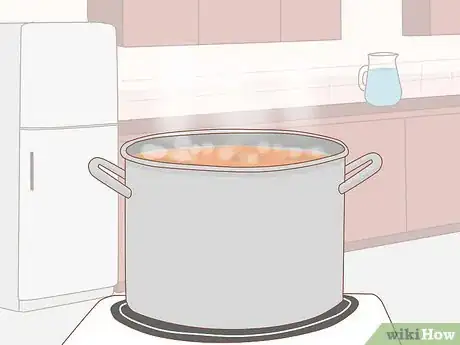





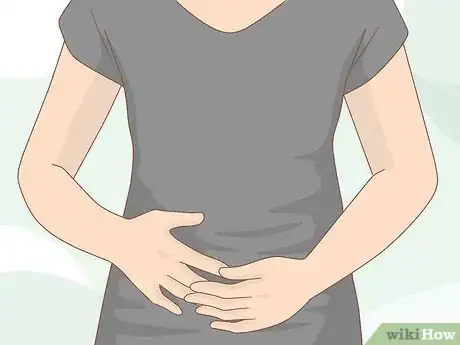

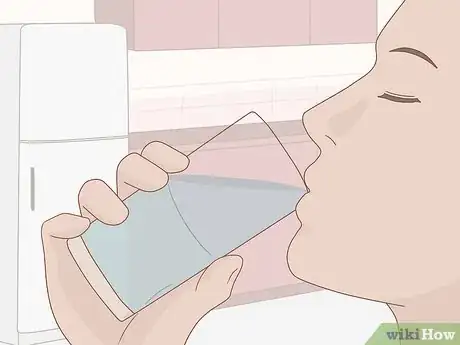
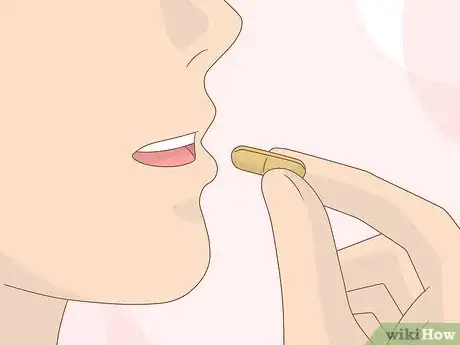

-Step-11-Version-2.webp)

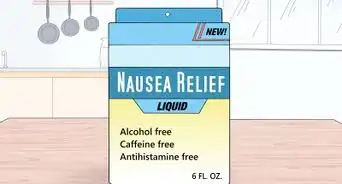



-Step-13.webp)
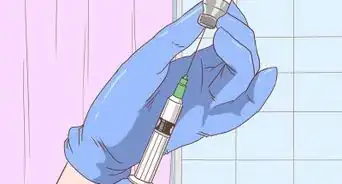
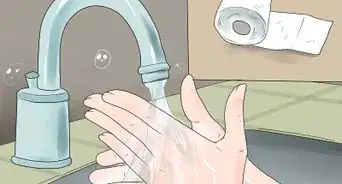
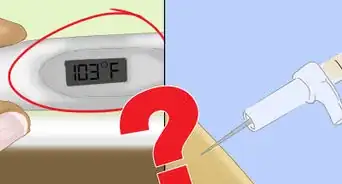










-Step-11-Version-2.webp)







































Medical Disclaimer
The content of this article is not intended to be a substitute for professional medical advice, examination, diagnosis, or treatment. You should always contact your doctor or other qualified healthcare professional before starting, changing, or stopping any kind of health treatment.
Read More...